- News
- Reviews
- Bikes
- Components
- Bar tape & grips
- Bottom brackets
- Brake & gear cables
- Brake & STI levers
- Brake pads & spares
- Brakes
- Cassettes & freewheels
- Chains
- Chainsets & chainrings
- Derailleurs - front
- Derailleurs - rear
- Forks
- Gear levers & shifters
- Groupsets
- Handlebars & extensions
- Headsets
- Hubs
- Inner tubes
- Pedals
- Quick releases & skewers
- Saddles
- Seatposts
- Stems
- Wheels
- Tyres
- Tubeless valves
- Accessories
- Accessories - misc
- Computer mounts
- Bags
- Bar ends
- Bike bags & cases
- Bottle cages
- Bottles
- Cameras
- Car racks
- Child seats
- Computers
- Glasses
- GPS units
- Helmets
- Lights - front
- Lights - rear
- Lights - sets
- Locks
- Mirrors
- Mudguards
- Racks
- Pumps & CO2 inflators
- Puncture kits
- Reflectives
- Smart watches
- Stands and racks
- Trailers
- Clothing
- Health, fitness and nutrition
- Tools and workshop
- Miscellaneous
- Buyers Guides
- Features
- Forum
- Recommends
- Podcast
review
£3,600.00
VERDICT:
Fast, direct and heaps of fun to race, but pricey for the spec and a few flaws detract from the brilliant ride
Weight:
7,840g
Contact:
At road.cc every product is thoroughly tested for as long as it takes to get a proper insight into how well it works. Our reviewers are experienced cyclists that we trust to be objective. While we strive to ensure that opinions expressed are backed up by facts, reviews are by their nature an informed opinion, not a definitive verdict. We don't intentionally try to break anything (except locks) but we do try to look for weak points in any design. The overall score is not just an average of the other scores: it reflects both a product's function and value – with value determined by how a product compares with items of similar spec, quality, and price.
What the road.cc scores meanGood scores are more common than bad, because fortunately good products are more common than bad.
- Exceptional
- Excellent
- Very Good
- Good
- Quite good
- Average
- Not so good
- Poor
- Bad
- Appalling
The Merida Mission CX 8000 is a super-smooth high-end race bike with brilliant handling on technical courses. The stability inspires confidence, but there are similarly specced bikes for a lot less money. I'd also want to change the axles.
- Pros: Light and chuckable handling gives a great ride
- Cons: Thu-axle design, expensive for the spec
The ride: Race focus
For me, cyclo-cross is a great way of maintaining fitness through the winter while improving skill and satiating my appetite for good-natured competition. The Mission CX 8000 is great for full-on racing, providing direct handling and excellent rut-finding accuracy.
Over bumpy ground, you'll always be held back by the small air volume of 33mm tyres, but the carbon frame, fork and seatpost help to relieve the worst of the shocks. Comparing this to my old school canti bike from 2013 is like night and day. This is so much smoother and also feels much nippier out of slow corners. That's imperative when a 'cross race is an hour of mini sprints.
Push the pace into a muddy corner and the grip will soon go, but that's the whole point of cyclo-cross and I found the 33mm tubeless Maxxis All Terrane tyres coped reasonably well. This is one area where the old way still wins. Tubulars are still simply better for racing, though I'm well aware that the focus of many people's 'cross bikes goes well beyond the race course.
The geometry really helps here. It's a very fun bike to ride with more stability than my old bike, but not the dull handling of some modern CX bikes. Away from racing, the Mission 8000 handles trail rides very well, and on the road it feels just like a normal road bike. It makes a great bike to take out training with a mix of road, grass and trails.
Frame
The 8000 is the second-highest in the Mission CX range, which goes from the entry-level 400 with an aluminium frame and Shimano 105 gearing up to the 8000-E, a Di2 version of the bike we have here, but with a 2x groupset and a wheel upgrade. It has received a redesign over the outgoing CycloCross model, with a racier position, flat mount brakes and Merida's Smart Entry cable stops.
It's no surprise to see Merida opting for a disc brake-only range. Axle standards are the very common 12x100mm and 12x140mm. If you're after a wheel upgrade down the line, that'll be very good news. There are also no funny wheel dishing standards here, everything is just nice and simple.
One of the slightly polarising features is that you have the option of fitting mudguards. You've got eyelets and a removable seatstay bridge that makes installing full mudguards easy. The issue is that this is a race bike. There are much better bikes for commuting duties where you want mudguards; eyelets are simply not needed here.
Mud clearance is one of the key features for the privateer racer, as most of us have only one bike to get us through even the muddiest races. Here, clearance is good with 33mm tyres and I had no issues, even at the mud-bowl that the Crawley National Trophy Round turned into. There are no 'mud shelves' where the mud could collect. That means that even when mud is sticking to the frame, it won't clog the wheels.
The Merida Expert seat clamp is a lightweight design but I did experience a slipped seatpost several times, despite using a torque wrench to set the bolt to its limit. The post also came with carbon gripper paste so I'd say a better clamp, or even an additional clamp, is needed.
A PF86 bottom bracket provides a nice stiff base and I've had zero clicks or creaks despite riding it through some proper 'cross conditions and jet washing after every race. The head tube tapers from the standard 1 1/8in top bearing to a massive 1 1/2in bottom bearing. It's all about increasing stiffness and making the handling more direct, and it certainly does the job.
The cables are all internally routed and Merida's Smart Entry system means that all combinations of hydraulics, electronic and mechanical shifting/braking can be neatly routed.
The geometry shows that Merida is moving towards a modern race bike that strikes a great balance between stability and reactive handling. A 68mm bottom bracket drop goes across the XS-XL frame sizes, as do the 423mm chainstays. The Mission CX is 5mm longer than the outgoing model with a marginally shorter head tube and a head angle that's 0.5 degrees slacker across the range. It all points to a bike that is lower, longer and much better suited to full-on racing than the old CycloCross model.
The paint job might not be everyone's cup of tea. Personally, I'd like to see Merida offering something more eye-catching, with more prominent graphics, along the lines of the Specialized Crux that Dave Arthur was testing, maybe.
Top tube shouldering is an important part of cyclo-cross and the shape of the Mission CX 8000's top tube makes it comfortable enough when running is the only option. Personally, I much prefer the traditional shape that Merida has used than the shouldering section that Canyon has come up with. Primarily, that's because when shouldering the bike for a tricky run-up it's very useful to be able to slide the bike around on the shoulder to help your balance. A flat top tube is perfect for that.
Like Dave found with the Specialized, I see no point in the front mech port. It looks ugly and has only been included to accommodate the 2x 105 groupset on the 7000. I'd much rather see a full 1x range, even if it means improvising a 105 1X setup on the 7000. Much like the mudguard issue, it feels as if Merida isn't fully committing to its CX bikes being race bikes.
Build
The 8000 that we have here comes with what I feel is probably the best option for racers who are taking things a bit more seriously. SRAM's Force CX1 groupset is really good, providing light shifting that remains accurate in poor conditions. It is dependable whatever it's faced with, and pretty easy to look after.
The SRAM Force cranks are carbon which contributes (or doesn't) to the low weight. The gearing pairs a 40T chainring with an 11-32T cassette. The chainring is spot on for me, though I'd probably swap out the cassette to an 11-28 as I find it's all too easy to lose traction with that 32. Then again, my lower back seems to be pretty happy about having that easier gear.
Braking is powerful thanks to the 160mm rotors which caught me out after coming over from cantilevers. I'm used to having to grab a lot of brake if I wish to stop, so I lost traction pretty quickly when using these for the first time. I have noticed that hand fatigue is greatly reduced and it's much easier to control the power with these.
The SRAM Force rear mech gives you solid shifting performance, even when I couldn't actually see the mech. The clutch is effective at preventing chain slap, and I've also experienced zero dropped chains so it seems to work well.
DT Swiss ER1400 Spline wheels are a very nice tubeless set that have been solid throughout testing. They're quite boxy, with a depth of just 20mm, but the internal width of 21mm provides a great tyre profile and supports the sidewalls when the pressures get dropped. The wheels certainly don't feel sluggish, but I would be looking to upgrade to tubulars for frequent racing.
While we're down at the wheels, let's have a look at my biggest gripe with the whole bike. The thru-axles feature a lever that is stowed within the axle. It looks very clean when riding, but come to the end of a race and there is no way of getting the lever back out with warm, dry hands. There's no point even trying with cold, wet hands post-race. The design is from Fulchee and I'd gamble that you'll want to buy new ones; they strike me as pointless over-engineering of a part that doesn't need it.
Tubeless tyres are improving and Maxxis has made a decent set with the All Terranes. They're not ones that I'd necessarily choose to buy, but as a stock pair, they've done rather well in a mix of conditions.
A pretty flat Merida Expert CC saddle tops off the Merida Carbon Team Superlite seatpost, and was comfy and proved a good landing perch.
The aluminium bar and stem go about their jobs with no fuss and survived a few little crashes and a lot of barrier hopping without fuss. The bar offers a nice compact drop, giving a secure position for braking if you're a fan of being in the drops. The bar tape gives decent grip when things get muddy and I never felt myself losing control of the bar.
Everything comes together in a package that weighs 7.84kg, which isn't bad at all and certainly feels pretty light when racing. If you're wanting to go lighter then wheels would be my first upgrade, and then the bar and stem.
Value for money
Expensive? Well, over three-and-a-half grand is a hefty price tag to pay for a bike that is going to see some pretty tough conditions. It's not alone, though – the Trek Boone 7 comes with the same SRAM Force groupset for £3,500. Although the narrower Bontrager wheels are a slight step down, the Bontrager Pro IsoCore VR-CF bar is a very good carbon upgrade over that on the Merida. You've also got a cleaner cable management system with Trek's Control Freak routing through the down tube.
> Buyer's Guide: 12 of the best cyclo-cross bikes
You can also spend more: while the SRAM Rival-equipped Specialized Crux Elite that Dave tested is now £3,000, the Expert – with SRAM Force and Roval carbon wheels – is £4,250.
A slightly cheaper price gets you Di2 and carbon wheels from Canyon: its Inflite CF SL 8.0 Team is £3,249. But shopping around shows you can spend a lot less for the same groupset. A Vitus Energie CRX Force (full review coming soon) will set you back just £1,709.99. Granted, the seatpost isn't carbon and the wheels are a bit of a step down, but that leftover cash could get you a set of race wheels and some very fancy tyres.
If you're looking for an even cheaper option, to get into cyclo-cross perhaps, Canyon's Inflite AL SLX 6.0 is £1,299; I've seen plenty of them at the pointy end of races this year so don't think aluminium will hold you back.
Conclusion
Merida's Mission CX 8000 is absolutely brilliant for racing fast and twisty courses. The handling is impeccable and it's a real joy to chuck about, although it's not without some issues: the seatpost slipping detracted from the ride and I would want to change the thru-axles – they don't have to be fancy or hidden, they just need to work. The Merida might not offer the absolute best bang for buck, but it does offer a grin-inducing ride – especially when you can get the seatpost to stay in place.
Verdict
Fast, direct and heaps of fun to race, but pricey for the spec and a few flaws detract from the brilliant ride
road.cc test report
Make and model: Merida Mission CX 8000
Size tested: Medium
About the bike
List the components used to build up the bike.
Frame: Mission CX CF3
Fork: Mission CX CF
Groupset: Sram Force CX 1X
Headset: VP-B303AC Neck
Handlebars: Merida Expert SL
Stem: Merida Expert CC
Tape: Merida Road Expert
Seat Post: Merida Carbon Team Superlite
Seat Clamp: Merida Expert
Saddle: Merida Expert CC
Chain: KMC X11-1
Bottom Bracket: Sram PF86
Wheelset: DT Swiss ER1400 Spline DB21
Tyres: Maxxis All Terrane
Axles: Fulchee FH1700BK002
Tell us what the bike is for and who it's aimed at. What do the manufacturers say about it? How does that compare to your own feelings about the bike?
A cyclo-cross bike aimed at racers who are getting serious.
Merida doesn't actually say much. It's a CX bike, that's for sure, and it's designed for racing.
Where does this model sit in the range? Tell us briefly about the cheaper options and the more expensive options
There is a Shimano Di2 top-end model, and two more carbon offerings below this with a 2x 105 groupset and a SRAM Apex edition propping up the range.
Frame and fork
Overall rating for frame and fork
9/10
Tell us about the build quality and finish of the frame and fork?
Build quality is really good. I had the headset bearings out before handing this back (I like to clean) and there is no sharp carbon or rough stuff.
Tell us about the materials used in the frame and fork?
Nano Matrix Carbon
"To protect the integrity of carbon frames, the fibres are bonded together with an epoxy resin with added nanoparticles, increasing impact resistance by up to 40%."
Tell us about the geometry of the frame and fork?
Lower and longer than the outgoing model. It's fun to ride and inspires confidence.
How was the bike in terms of height and reach? How did it compare to other bikes of the same stated size?
It's easy to get a comfortable position. The Cannondale SuperX that I tested last year felt lower but both are great fun to ride.
The reach is good, not too far forward, which helps the lower back! The Specialized Crux has a reach of 375mm to the Merida's 382mm. Just a little longer.
Riding the bike
Was the bike comfortable to ride? Tell us how you felt about the ride quality.
Really smooth and planted. It really helps on the rougher courses which the Western League seems to have a few of.
Did the bike feel stiff in the right places? Did any part of the bike feel too stiff or too flexible?
All on point. I didn't feel beaten up at the end of a race yet this felt nippy out of corners and stiff on the steep climbs.
How did the bike transfer power? Did it feel efficient?
Both seated and out-of-the-saddle efforts feel good and I never got bogged down.
Was there any toe-clip overlap with the front wheel? If so was it a problem?
I didn't notice any toe overlap. No issues here.
How would you describe the steering? Was it lively neutral or unresponsive? On the lively side of neutral. Positive but easy to manage.
Tell us some more about the handling. How did the bike feel overall? Did it do particular things well or badly?
It is predictable which makes picking a line much easier. I was able to aim for a rut and hit it.
Which components had the most effect (good or bad) on the bike's comfort? would you recommend any changes?
The seatpost gives good vibration damping but it was prone to slip, so a better clamp is needed.
Which components had the most effect (good or bad) on the bike's stiffness? would you recommend any changes?
The BB is pretty huge, but the 1 1/2 inch lower headset bearing provides masses of front end stiffness.
Which components had the most effect (good or bad) on the bike's efficiency? would you recommend any changes?
None.
Rate the bike for efficiency of power transfer:
9/10
Rate the bike for acceleration:
9/10
Rate the bike for sprinting:
9/10
Rate the bike for high speed stability:
8/10
Speeds aren't hugely high in a CX race so I took this on the road. Fine here, no issues.
Rate the bike for low speed stability:
10/10
Great in tight corners and handles slow sand sections easily.
Rate the bike for flat cornering:
9/10
You can really wang this into a corner. It's happy to go as fast as the grip will allow.
Rate the bike for cornering on descents:
7/10
Not as smooth as my road bike but still no issues.
Rate the bike for climbing:
7/10
The weight of a CX bike will always hold it back a little but it's fine for the short, sharp CX efforts.
The drivetrain
Rate the drivetrain for performance:
10/10
Perfect for CX racing.
Rate the drivetrain for durability:
7/10
SRAM needs to be tuned well for it to work nicely.
Rate the drivetrain for weight:
7/10
Good weight for a disc setup with a clutch rear mech.
Rate the drivetrain for value:
7/10
You can pay a lot less for decent performance and Shimano's 105 disc might outdo this.
Tell us some more about the drivetrain. Anything you particularly did or didn't like? Any components which didn't work well together?
Everything just works. I still prefer the shifting of Di2 which feels faster and smoother to me. The disc brakes are nice with good modulation.
Wheels and tyres
Rate the wheels for performance:
9/10
As a stock set of tubeless wheels, these are great.
Rate the wheels for durability:
9/10
Still straight after multiple bumps and much bunny hopping.
Rate the wheels for weight:
8/10
1,493g is good for stock disc wheels.
Rate the wheels for comfort:
5/10
Comfort comes from the tyres.
Rate the wheels for value:
7/10
Tell us some more about the wheels.Did they work well in the conditions you encountered? Would you change the wheels? If so what for?
The best thing about them is the internal rim width, which at 21mm gives great tyre support.
The hidden lever design of the thru-axles might look good but it doesn't work properly, getting stuck in the axle and even starting to rust inside. I ended up resorting to a hammer and a flat screwdriver to tap it out. That doesn't look very good.
Rate the tyres for performance:
6/10
They did okay but there are much better options out there.
Rate the tyres for durability:
8/10
I ran these really low, with lots of gravel on the CX courses. No punctures and very little wear.
Rate the tyres for comfort:
6/10
Not the most supple. You could get more comfort out of a tyre with a higher tpi count.
Controls
Rate the controls for performance:
6/10
Bar and stem do their job without fuss.
Rate the controls for durability:
6/10
Fine after a couple of bumps.
Rate the controls for weight:
5/10
You could swap a lot of money for less weight. These are fine.
Rate the controls for comfort:
5/10
Carbon would be more comfortable but again, it'd cost a lot.
Anything else you want to say about the componentry? Comment on any other components (good or bad)
The seatpost clamp isn't strong enough to stop slipping when remounting.
Your summary
Did you enjoy riding the bike? Loved it.
Would you consider buying the bike? No, with my budget I'd go with the Vitus.
Would you recommend the bike to a friend? Yes, a racer looking for a very fast bike.
How does the price compare to that of similar bikes in the market, including ones recently tested on road.cc?
If you want a carbon frame and SRAM's excellent Force 1X, you can spend less by getting a Vitus. The wheels aren't as good, but I'd use the cash saved on a tubular wheel upgrade.
Rate the bike overall for performance:
9/10
Rate the bike overall for value:
7/10
Use this box to explain your overall score
This gains marks for the handling which inspires confidence from its predictability, and I really like the riding position, but it loses out on value for the spec. I can't help feeling that Merida would do better to commit more to making this a proper race bike and leaving its other bikes to be commuters and gravel bikes.
About the tester
Age: 24
I usually ride: Cannondale Supersix Di2 My best bike is:
I've been riding for: 5-10 years I ride: Most days I would class myself as: Expert
I regularly do the following types of riding: road racing, time trialling, cyclo-cross, commuting, club rides, general fitness riding, I specialise in the Cafe Ride!




































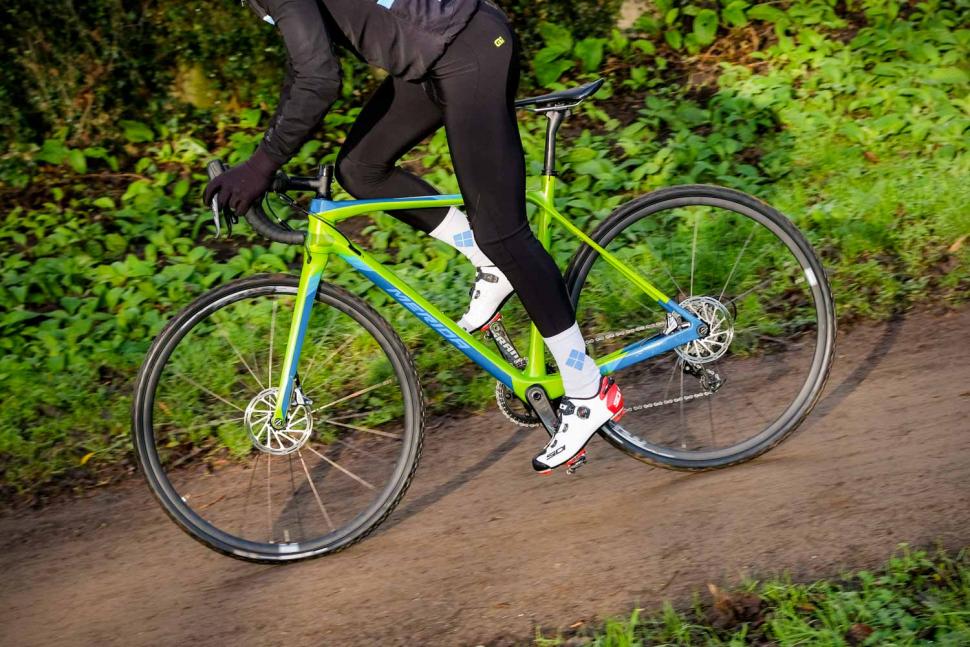

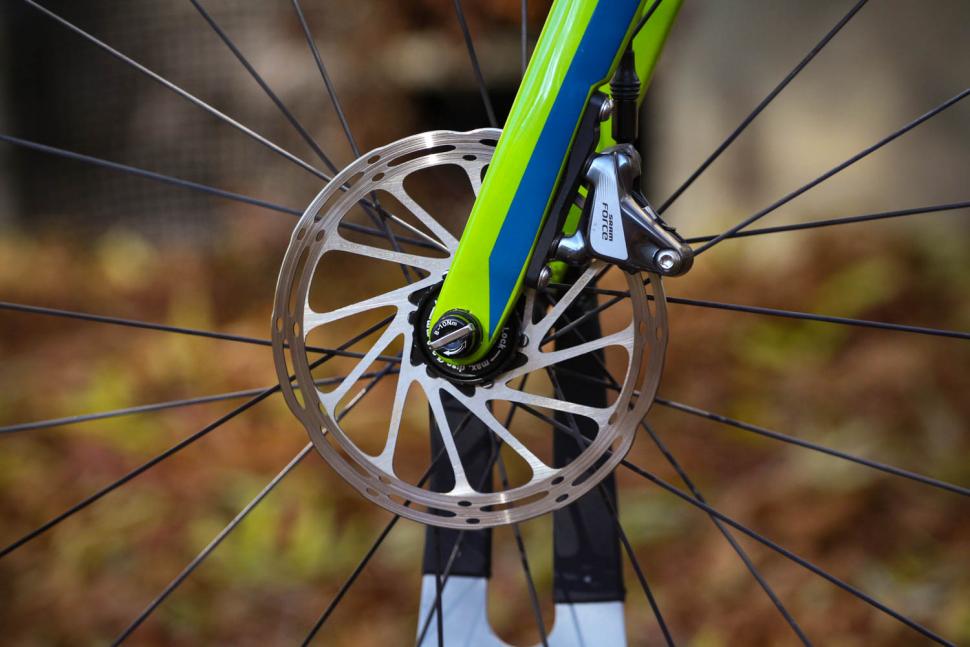








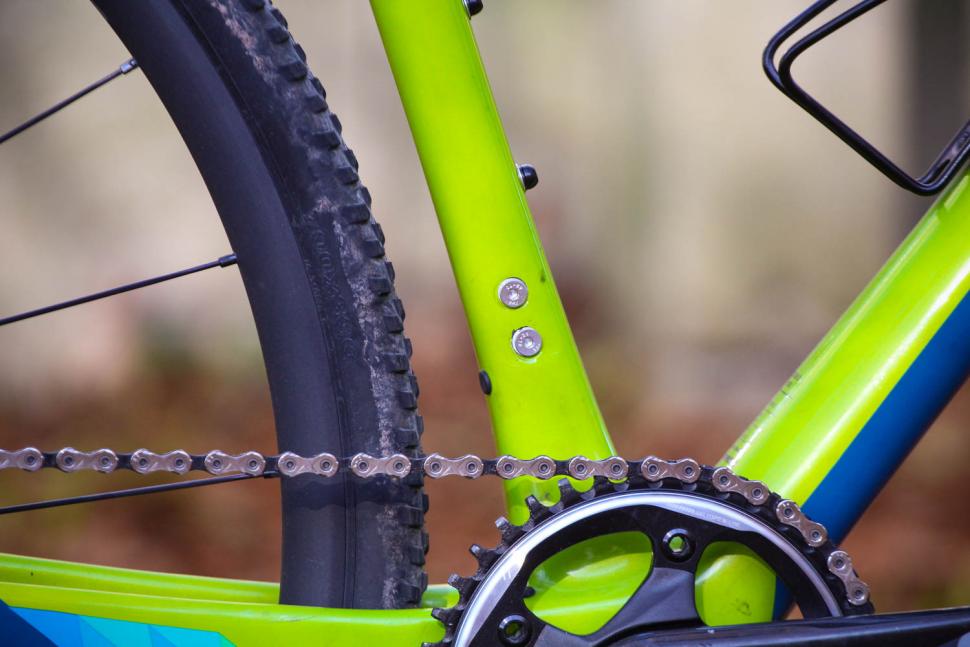

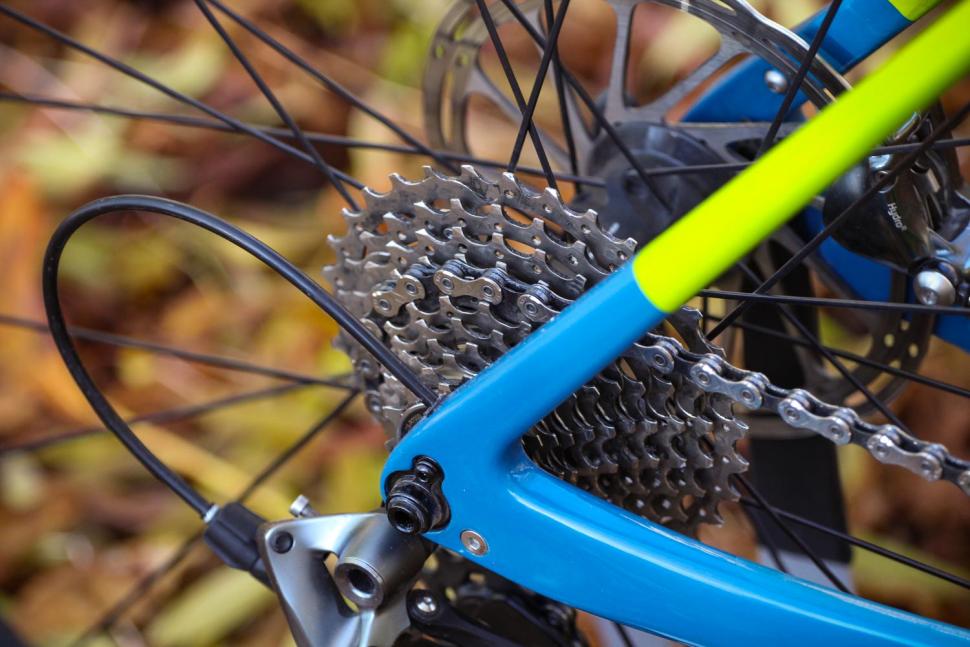
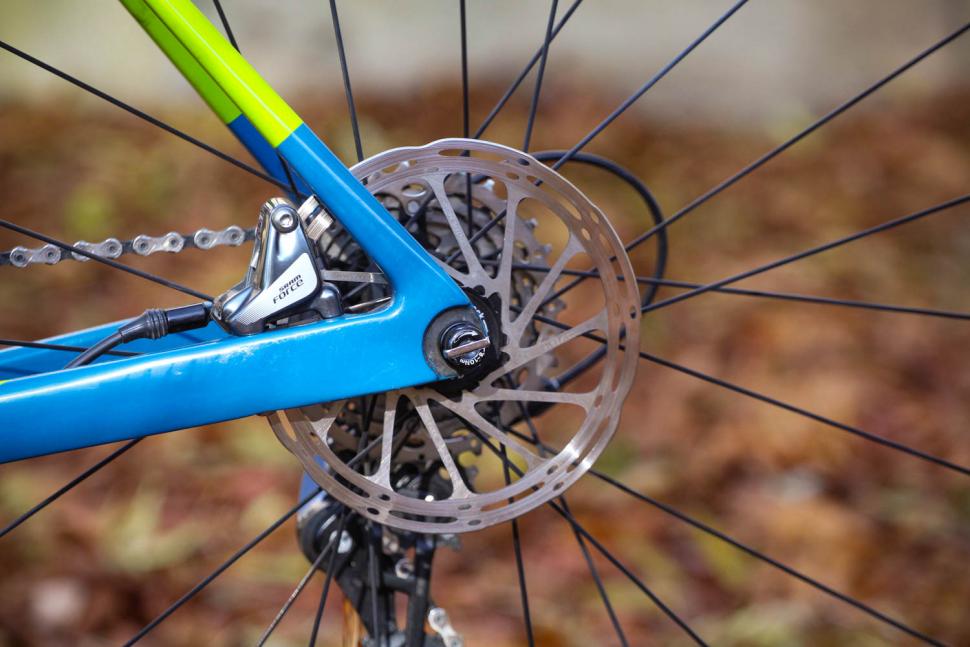
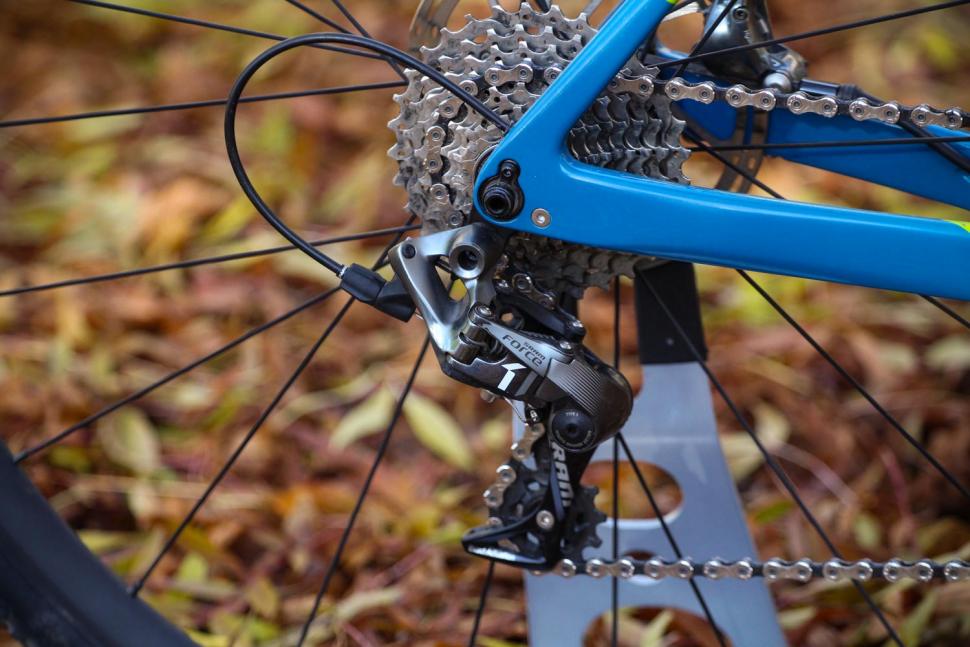

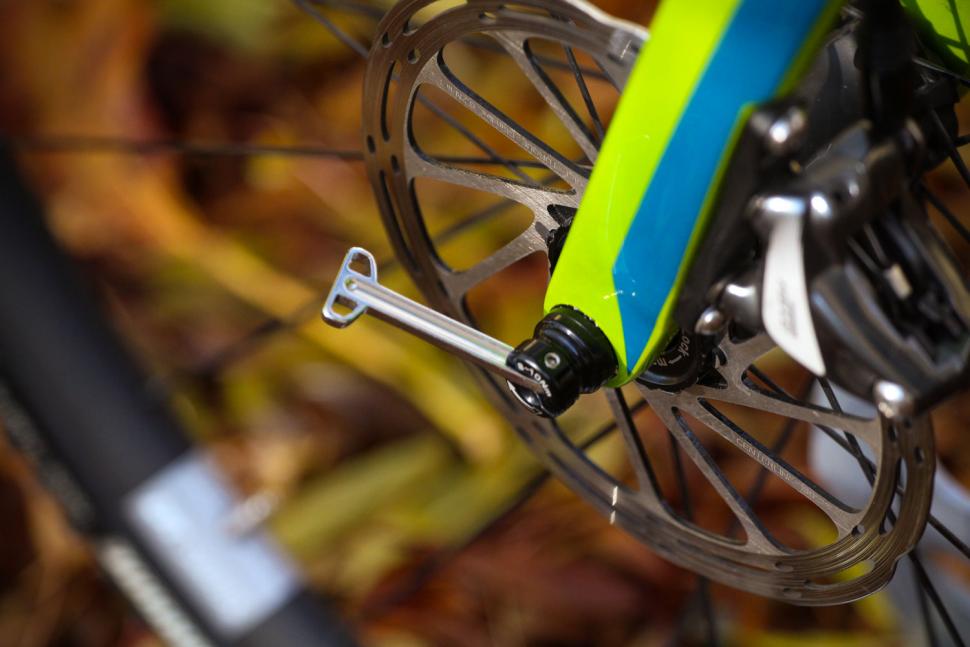


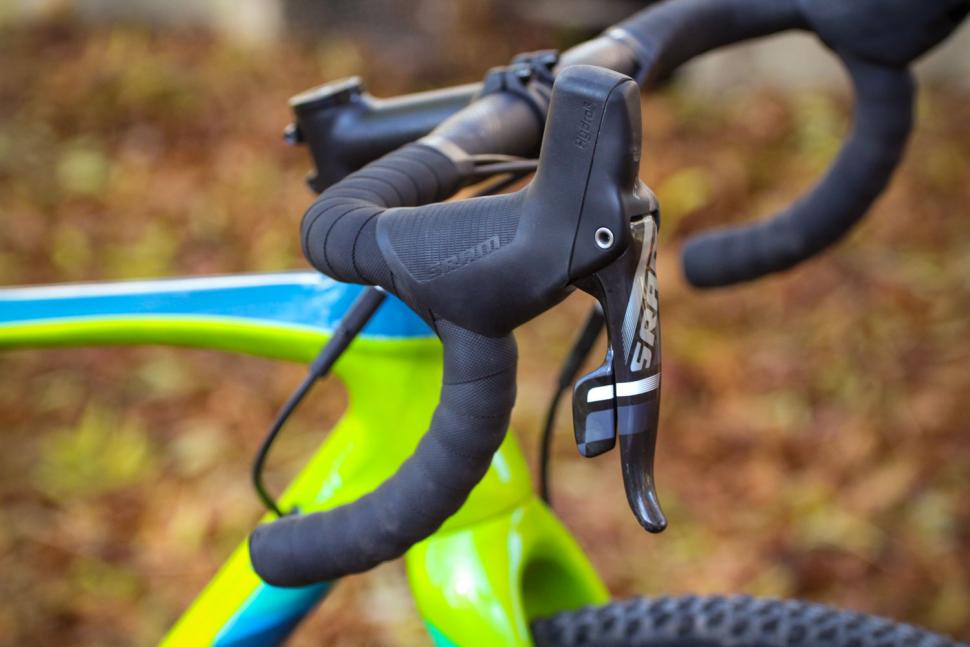




Frame weight is about a hundred grams less than a CAAD 12 disc, which can be picked up cheap these days on gumtree. Heck, get the CAAD12 non disc...
You're too kind. They just seem to be unpleasant trolls.
I realised that the lads crash is a rare set of circumstances, and the numbers in the race would add complexity, but don't smart watches have...
And in Southampton today we had another example of those entitled ambulances going through red lights without a care for anyone else!...
Because the number of 40% tax payers buying downhill bikes on the scheme, whilst lower rate tax payers (who are more likely to actually cycle to...
The spokes and nipples are not anodised for environmental reasons, but the rims are. Which is a lot more metal. Hmm...
Yeah, they'll be great after being crushed in your jersey pocket for three hours. ...
I'm afraid so, anything operated by TfL apart from the Woolwich ferry and the Silvertown Tunnel bike bus when it opens next month.
That's a bit hard on the cat...
Its only "meh" because we all experience similar passes every ride, I'm sure if they got their finger out and worked out the distance it would be...